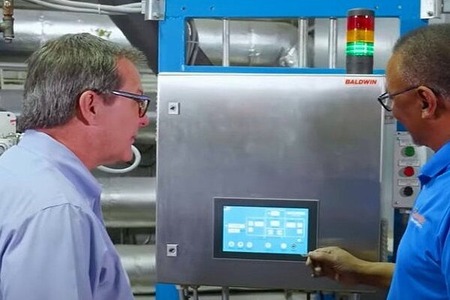
Zimbabwe need to recapitalize its textile industry, required at least $200m
YarnsandFibers News Bureau 2014-07-10 11:45:00 – ZimbabweThe Zimbabwean textile industry requires at least $200 million in the short to medium term to recapitalize, this was revealed by the Zimbabwe Economic Policy Analysis and Research Unit (Zeparu) based on the research study conducted on the Zimbabwean cotton and clothing industry. But, the biggest challenge for the Zimbabwe government with global competitive pressure is to find a way out to make the most of the cotton resource to industrialize in the context of a liberal market.
The textile sector being a high volume, low margin business, in order to reduce the production costs, equipment with technology upgrade is crucial to increase production capacity.
Costs of energy and employment can then be amortized besides an improvement in product quality, production efficiencies and competitiveness. Approximately $200 million will be required as medium to long term loans for the industry.
About $50 million is required to support cotton farmers while the same amount is needed for plant upgrades while the textile sector also needs to recapitalize and restructure to achieve plant and technology upgrades to raise production capacity.
Zimbabwe’s textile sector used to be one of the country’s major employers, employing about 51,000 people at its peak. Considering the clothing sub-sector alone, employment numbers sharply reduced from 13,500 in 2009 to 12,506 in 2010, then to 8,627 in 2011 and to a mere 4,748 in 2012, as per the report.
The textile industry fared even worse than the clothing industry during the same period with such giants as David Whitehead, the sectors largest firm, Cone Textiles or Modzone, Merlin and Cotton Printers all collapsing.
But Zimbabwe has major competitive advantages over other textile manufacturing countries. These include proximity to the industry’s primary raw material cotton in addition to skilled labour and a highly literate population. The textiles and clothing sub-sector is an important arm of the manufacturing sector. But there is need for the creation of an enabling business environment to prevail in Zimbabwe.
Investors will always follow where there is potential for profit and where risks are predictable. Zimbabwe needs to complete its chapter on indigenization once and for all. The country should create competitive advantages through legislation.
The collapse of the sub-sector left a very big structural hole in the manufacturing sector. But there is no doubt that the recovery and further development of the cotton chain has potential to strengthen industrialization in Zimbabwe in future.
Investors will always follow where there is potential for profit and where risks are predictable. Zimbabwe needs to complete its chapter on indigenization once and for all. The country should create competitive advantages through legislation.
The collapse of the sub-sector left a very big structural hole in the manufacturing sector. But there is no doubt that the recovery and further development of the cotton chain has potential to strengthen industrialization in Zimbabwe in future.
Market Intelligence
Ask for free sample Report

experience
Customer Base
dedicated team
Countries Served Worldwide









